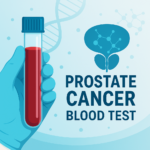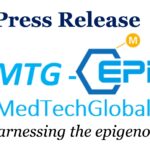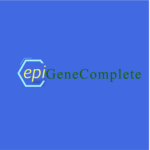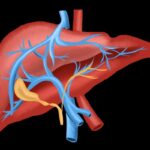How the epigenetic clock was developed.
Ageing is a topic that concerns everyone. After all, this process is inevitable for many organisms we encounter, including ourselves. Scientists have been studying the mechanisms that cause us to age for decades. Ageing is a complex biological process, and sometimes people may age at an accelerated or slower rate as compared to the actual number of the years they have lived. This means that their biological age is different from their chronological one. Calculation of the biological age is of great interest to scientists because it can highlight changes that the body undergoes in course of its life. One of the approaches taken in this “hidden age calculation” is to use our genetic material itself the DNA. This approach was proposed several years ago by professor Steve Horvath.
One of the most prevalent theories of ageing is the accumulation of significant damage caused by cell macromolecules, mainly proteins and nucleic acids. This has multiple consequences for the cells and for the whole body. Molecular damage to different macromolecules is interconnected. Damage to DNA – our genetic material – can result in faulty proteins, and the latter may lead to the disordered repair of DNA, thus, increasing the amount of mistakes in the DNA and impairing the way genes work. Another symptom of age is the decrease in the length of chromosomes. Recently, another significant change was noted. The proteins that help contain the DNA in the chromosome, so-called histones, are also altered with age.
The chromosomes in our cells are organized in chromatin. Chromatin is basically composed of DNA tightly wound around protein blocks that form so-called “beads on a string” structure. The molecular links between chromosomal proteins and DNA arecritical for normal activity of the cell. If proteins and DNA are bound very robustly together, other proteins cannot “read” the information in this particular region of the chromosome. The genes located in those regions go silent and are not used to make proteins. When the proteins and DNA are bound loosely, the information is significantly more accessible. Other proteins can land there and transcribe a copy of the gene onto another nucleic acid – the RNA, which is further used in production of new proteins.
The strength of the bonds between histones and DNA is regulated by mechanisms that scientists call “epigenetic” – basically, mechanisms that are “above genes’. There are multiple ways to interfere with chromosome structure by those mechanisms. One of the strategies that the cell utilizes to control the accessibility of DNA in chromatin is called DNA methylation. This is a process whereby a methyl group, CH3, is added to one of the bases in the DNA called cytosine, marking this region of DNA. The addition of a methyl group to a nucleotide is one of the most widespread epigenetic marks.
Very often, epigenetic marks are added to cytosines that are located near another base – guanine. The areas which have an abundance cytosine –guanine pairs are called CpG islands. CpG islands are especially numerous in the areas of the DNA called promoters. Promoters are the landing spots for proteins that initialize the “reading” of genes in order to make proteins encoded by genes. .
It was found that certain CpG islands increase the number of methyl groups attached as the organism ages, while other regions of DNA may lose methylation with time. This fact has pointed to the possibility that methylation of CpG islands may be directly linked with age.
Based on this assumption, Steve Horvath, a professor from the University of California, Los Angeles, specializing in Human Genetics and Biostatistics, decided to develop a calculator for epigenetic age based on the rate of methylation of CpG islands.
In order to do develop his calculator, Horvath has collected a number of data sets that contained information on methylation in cells taken from various tissues of the body. He has used both the freely available data in the Internet databases and special sets of data provided to him by researchers. There were 82 whole sets of information altogether that included 51 types of cells in total. The analysis covered the following groups of cells:
Cells of the blood (both red blood cells and white blood cells)Cells taken from various areas of the brainBreast tissue cellsCells taken from the inner side of the cheek so-called buccal cells)Cells taken from the intestineCartilage cellsCells from the deeper layers of the skin (dermal cells)Cells from the upper layer of the skin (epidermis)Stomach cellsCells from the head and neck areaCells taken from the heartKidney cells Liver cellsLung cellsBone marrow cellsSaliva samplesFat tissue cellsCells from the lining of the uterusSperm cellsCells that compose the blood vesselsMuscle tissue
Horvath also analyzed 20 samples taken from tumors and cancer cell lines to compare the epigenetic ages of healthy cells and cells transformed by cancer.
The researcher applied mathematical and statistical analyses to select the genes that were most affected by aging. His approach allowed him to find 353 CpGs that were consistently changed with age. There were 193 CpGs that accumulated methylation as the body aged, while 160 CpG had less epigenetic marks in aged individuals as compared to younger ones. Horvath has also discovered that the genes that acquired more methyl groups with age were located near genes controlled by so-called Polycomb proteins that are responsible for regulating gene activity and of chromatin states.
The newly developed epigenetic clock was proven to be reliable. According to the analysis, the clock was set at zero at the initiation of the developmental process of a new embryo. As the new individual grew, the clock was going forward as well, and the difference between chronological age (the number of years the person lived) and the age calculated based on the epigenetic clock was no more than 3 years. The predictions of epigenetic or DNAm age were accurate for most tissues except breast tissue, tissue from the uterus, muscle tissue, and skin cells. The results ofDNAm age calculations obtained from different tissues taken from the same person were similar as well.
Another piece of evidence that DNAm age calculation was accurate was provided by the analysis of cells obtained from patients with progeria – a syndrome when patients rapidly age in childhood. Epigenetic age of these cells was significantly higher than the actual age of the patients.
When the researcher looked at the cancer cells, he has first concluded that in cancer, the epigenetic age was significantly higher than the actual age of the cell. Later, he has found he has made an error in his calculations. As was mentioned earlier, there were 20 cancer cell types tested. Among those, 6 cancer cell types had higher epigenetic age (which means their age has accelerated). Breast cancer is among the cancer disorders where this acceleration happens. In the samples from other 14 types of cancer, epigenetic age was lower – they looked younger than expected. It was different from the initial statements that all cancer cells had higher than normal epigenetic age.
Cancer cells are known to harbor multiple errors in their DNA – called mutations. In cancer cells that were loaded withmutations, the epigenetic age was higher. It was also interesting that in cancer cells that had mutations in the gene called p53, the epigenetic age was lower compared to cells that did not have errors in this gene. This gene plays an important role both in normal cell development and in cancer, so it is very interesting that it influences the epigenetic age of a cancer cell as well.
There were a couple of additional interesting facts uncovered by Horvath’s research. For example, he has found that epigenetic age can be calculated with similar accuracy in chimpanzees. This fact adds to our belief that chimpanzees are the most closely related species to humans.
Another interesting finding is related to the so-called stem cells. Stem cells are special cells whose fate is undetermined. They can potentially become any type of cells depending on their environment. In recent years, researchers have learned to transform “professional” or terminally differentiated cells in the body into undifferentiated stem cells – these cells are called induced pluripotent cells, iPSCs. Horvath has found that both stem cells and iPSCs have epigenetic age of zero. He has also found that when cell cultures were moved to another medium in the process called passage, their epigenetic age increased.
The geneticist has also proposed an explanation as to why DNA methylation is so closely tied to our age. He reasoned that the changing rates of methylation reflect the work of the so – called epigenetic maintenance system (EMS). This system is responsible for keeping the epigenetic marks in place, as there are areas in the chromosomes that should always be methylated, for instance. With age, DNA in the cells can gather small errors-mutations, and this can affect the activity of the EMS.
Horvath’s work is crucial for future studies of aging and development of cells, as well as cancer biology. His epigenetic clock is widely used for multiple applications and types of research at present.
Literature.
Horvath, S. [May, 2015]. Erratum to: DNA methylation age of human tissues and cell types. Genome Biology, V. 16, №1, p. 96. Campisi, J. and J. Vijg [February, 2009]. Does Damage to DNA and Other Macromolecules Play a Role in Aging? If So, How? J. Gerontol. A Biol. Sci., V. 64A, №2, pp. 175-178Chromatin. National Human Genome Research Institute. Genome. Gov. Retrieved November 5, 2020 from: https://www.genome.gov/genetics-glossary/ChromatinFeser, J. and J. Tyler [July, 2011]. Chromatin structure as a mediator of aging. FEBS Letters, Issue 13, № 7, pp. 2041-2048Christensen, B.C. et al. [August 14, 2009]. Aging and environmental exposures alter tissue-specific DNA methylation dependent upon CpG island context. PLoS Genetics, V. 5, № 8., p.e1000602. Retrieved November 5, 2020 from: https://pubmed.ncbi.nlm.nih.gov/19680444/Jung, M. and G.P. Pfeifer [2013]. CpG Islands. In: Brenner’s Encyclopedia of Genetics (Second Edition). Retrieved November 5, 2020 from: https://www.sciencedirect.com/science/article/pii/B9780123749840003491Hutchinson-Gilford progeria syndrome. MedlinePlus. Retrieved November 5, 2020 from: https://medlineplus.gov/genetics/condition/hutchinson-gilford-progeria-syndrome/Golbabapour, S. et al. [June, 2013].Gene Silencing and Polycomb Group Proteins: An Overview of their Structure, Mechanisms and Phylogenetics. OMICS, V. 17, №6, pp. 283-296TP53 gene. Medline Plus. Retrieved November 5, 2020 from: https://medlineplus.gov/genetics/gene/tp53/#:~:text=The%20TP53%20gene%20provides%20instructions,or%20in%20an%20uncontrolled%20way.Passage number effects in Cell lines. ATCC. Retrieved November 5, 2020 from: https://www.lgcstandards-atcc.org/Services/Testing_Services/Cell_Authentication_Testing_Service/Passage_Number_Effects_in_Cell_Lines.aspx?geo_country=uaMedvedev, S. P., A. I, Schevchenko, And S. M. Zaikan [July 2, 2020]. Induced Pluripotent Stem Cells: Problems and Advantages when Applying them in Regenerative Medicine. Acta Naturae, V. 2, № 2, pp. 18-28Almouzni, G. and H. Cedar [May, 2016]. Maintenance of Epigenetic Information. Cold Spring Harbor Perspect. Biol. , V. 8, № 5, p. a019372. Retrieved November 5, 2020 from: https://www.ncbi.nlm.nih.gov/pmc/articles/PMC4852805/
Recent Blog Posts
-
 13 Jun 2025MTL Epitherapeutics and RI-MUHC Develop Early Prostate Cancer Blood Test
13 Jun 2025MTL Epitherapeutics and RI-MUHC Develop Early Prostate Cancer Blood Test -
 11 Jan 2025EpiAge Research Publication Signals a New Era in Understanding Biological Aging
11 Jan 2025EpiAge Research Publication Signals a New Era in Understanding Biological Aging -
 18 Nov 2024EpiMedtech Global Announces FDA Registration of EPIAGE, the First Epigenetic Age Test Registered by the FDA
18 Nov 2024EpiMedtech Global Announces FDA Registration of EPIAGE, the First Epigenetic Age Test Registered by the FDA -
 18 Nov 2024EpiMedTech Global Validates Unique epiCervix HPV Combo Test for Cervical Cancer Detection
18 Nov 2024EpiMedTech Global Validates Unique epiCervix HPV Combo Test for Cervical Cancer Detection -
 31 Oct 2024HKG epiTherapeutics’ MetaGen Genetic Risk Assessment Test Receives FDA Registration, Now Available in the U.S.
31 Oct 2024HKG epiTherapeutics’ MetaGen Genetic Risk Assessment Test Receives FDA Registration, Now Available in the U.S. -
 31 Oct 2024EpiMedTech Global Launches epiGeneComplete: A Breakthrough Genetic and Epigenetic Test for Comprehensive Health Diagnostics
31 Oct 2024EpiMedTech Global Launches epiGeneComplete: A Breakthrough Genetic and Epigenetic Test for Comprehensive Health Diagnostics -
 30 Oct 2024Enhanced Early Detection of Liver Cancer
30 Oct 2024Enhanced Early Detection of Liver Cancer -
 08 Oct 2024Are Microarrays Still Reliable? How Next-Generation Sequencing Outperforms Traditional Methods
08 Oct 2024Are Microarrays Still Reliable? How Next-Generation Sequencing Outperforms Traditional Methods



